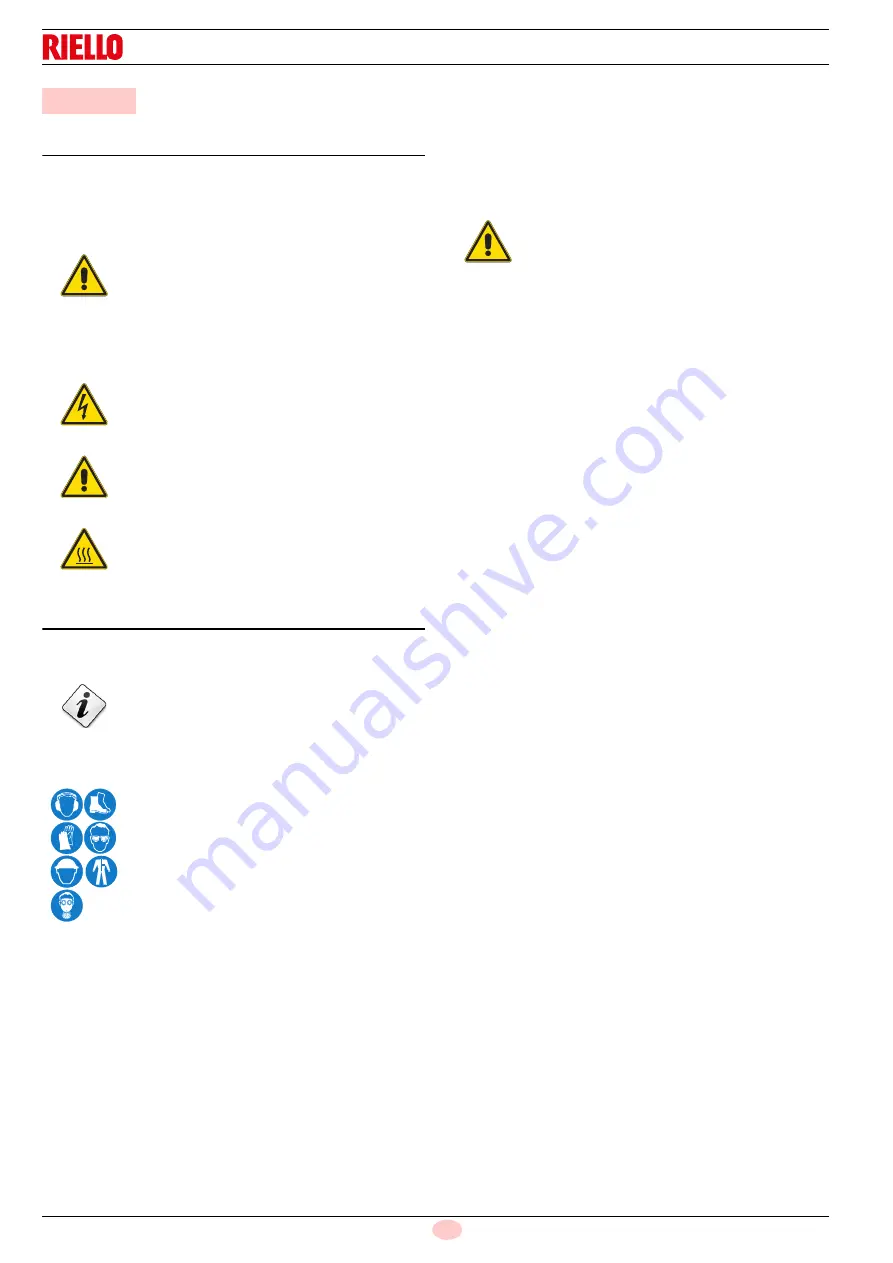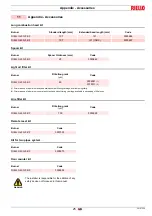
20197230
22
GB
Maintenance
9.1
Notes on safety for the maintenance
The periodic maintenance is essential for the good operation,
safety, yield and duration of the burner.
It allows you to reduce consumption and polluting emissions and
to keep the product in a reliable state over time.
Before carrying out any maintenance, cleaning or checking oper-
ations:
9.2
Maintenance programme
9.2.1
Maintenance frequency
9.2.2
Checking and cleaning
Pump
If the pressure is unstable, or the pump runs noisily, the flexible
hose must be detached from the line filter and the fuel must be
sucked from a tank located near the burner. This measure per-
mits the cause of the fault to be traced to either the suction piping
or the pump.
If the problem lies in the suction line, check the filter is clean and
that air is not entering the piping.
Hoses
Check there are no occlusions or obstructions in the fuel supply
or return lines, in the air suction areas, and in the combustion
product waste pipe.
Filters
Clean the filter of the fuel suction line and of the pump.
If rust or other impurities are observed inside the pump, use a
separate pump to lift any water and other impurities that may
have deposited on the bottom of the tank.
Electrical wiring
Check that the electrical wiring of the burner has been made
properly (page 17).
Fan
Check to make sure that no dust has accumulated inside the fan
or on its impellers, as this condition will cause: a reduction in the
air flow rate and provoke polluting combustion.
If necessary, clean the impeller
Combustion head
Check that all the parts of the combustion head are undamaged,
not deformed by the high temperatures, free of all impurities and
positioned correctly.
Clean the combustion head in the fuel outlet area.
Check that the positioning of the combustion head is correct and
that it is properly fixed to the boiler.
Nozzles
Do not clean the nozzle openings.
It is advisable to replace nozzles every year during regular main-
tenance operations or whenever necessary. The change of noz-
zle requires the combustion to be controlled.
Electrodes
Check the correct positioning of the electrodes (page 21).
Combustion
The optimum calibration of the burner requires an analysis of the
flue gases. Significant differences with respect to the previous
measurements indicate the points where more care should be
exercised during maintenance.
Leave the burner working without interruptions for 10 min. and set
rightly all the components stated in this manual.
Then carry out
a combustion check verifying:
- smoke index (Bacharach);
- CO2 percentage (%);
- CO content (ppm);
- NOx content (ppm);
- flue gas temperature at the flue.
9
Maintenance
DANGER
The maintenance interventions and the calibration
of the burner must only be carried out by qualified,
authorised personnel, in accordance with the con-
tents of this manual and in compliance with the
standards and regulations of current laws.
DANGER
disconnect the electricity supply from the burner
by means of the main switch of the system;
DANGER
close the fuel interception tap.
Wait for the components in contact with heat
sources to cool down completely.
The combustion system should be checked at
least once a year by a representative of the man-
ufacturer or another specialised technician.
The operator must use the required equipment
during maintenance.
WARNING
Check periodically the hoses conditions.
Using kerosene, they have to be replaced at
least every 2 years.
A metal bowl filter with replaceable micronic
filter must be fitted.
Содержание 3749251
Страница 2: ...Original instructions...





































